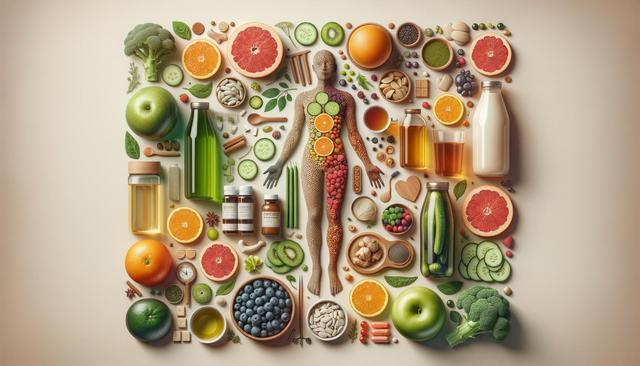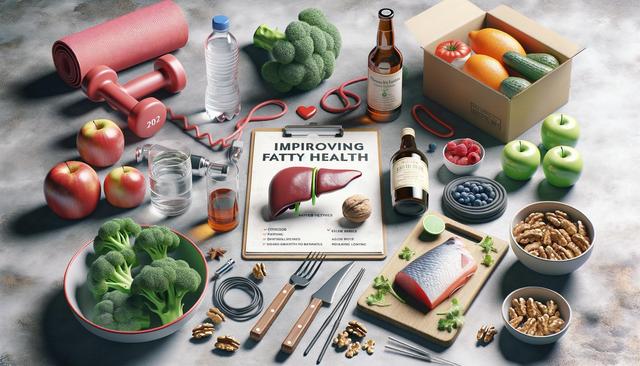Understanding What a Body Detox Really Means
The term ‘body detox’ is often used to describe a variety of practices that claim to rid the body of toxins and improve health. However, it’s important to understand that the human body already has natural detoxification systems in place, primarily through the liver, kidneys, lungs, skin, and digestive tract. Instead of relying on extreme methods, a proper detox or cleanse should focus on supporting these organs in their natural functions. This involves making dietary and lifestyle choices that reduce the intake of harmful substances while enhancing the body’s ability to eliminate waste efficiently.
Some common misconceptions about detoxing include the idea that it requires complete fasting or consuming only juices. While these methods may provide short-term results, they are not sustainable or necessarily beneficial in the long run. A more effective approach involves incorporating whole, nutrient-dense foods, staying hydrated, and avoiding processed ingredients. Understanding the body’s needs is the first step toward a safe and purposeful cleanse.
Foods That Support Natural Detoxification
Choosing the right foods is essential when aiming to support the body’s detox pathways. Certain foods contain compounds that help the liver process toxins more effectively, while others aid in digestion and encourage toxin elimination through the gastrointestinal tract. By including these items in your daily meals, you can promote better internal balance without drastic changes.
Here are some foods known to support detoxification:
- Leafy greens like spinach, kale, and arugula
- Cruciferous vegetables such as broccoli, cauliflower, and Brussels sprouts
- Fruits high in antioxidants, including berries, oranges, and apples
- High-fiber foods like oats, chia seeds, and lentils
- Fermented foods such as kimchi, sauerkraut, and kefir for gut health
In addition to food choices, reducing sugar, alcohol, and caffeine intake can significantly ease the burden on your liver and kidneys. Gradual dietary improvements tend to have more lasting results than short-term restrictive regimens.
The Role of Hydration and Herbal Support
Water plays a vital role in every detox process. It helps flush out waste through urine, supports digestion, and keeps the skin clear. Most experts recommend drinking at least 8 glasses of water per day, though individual needs can vary based on activity level, climate, and overall health. Adding slices of lemon, cucumber, or mint to water may provide additional antioxidants and make hydration more enjoyable.
Some herbal teas are also known for their potential to support detoxification. These include:
- Dandelion root tea – supports liver function
- Milk thistle tea – contains silymarin, a compound known for liver protection
- Ginger tea – aids digestion and may reduce inflammation
- Green tea – rich in antioxidants and supports metabolism
However, it’s important to use herbs in moderation and consult with a healthcare provider, especially if you have underlying health conditions or are taking medications. Not all herbal supplements are appropriate for every individual, and their effectiveness can vary.
Movement and Sweating as Detox Tools
Physical activity contributes significantly to the body’s cleansing processes. Exercise improves circulation, supports lymphatic drainage, and encourages sweating – all of which help remove toxins through the skin and support organ function. Activities like brisk walking, yoga, cycling, and strength training can all be beneficial when included regularly in your routine.
In addition to exercise, practices that promote sweating such as infrared sauna sessions or hot baths can further assist the skin in toxin elimination. Sweating not only removes impurities but also helps regulate body temperature and improve skin health. Here are some effective ways to incorporate movement and sweating into your detox plan:
- Start the day with light stretching or yoga to stimulate the lymphatic system
- Engage in 30 minutes of moderate exercise most days of the week
- Use hot baths with Epsom salts to relax muscles and support detox through the skin
- Stay hydrated before and after sweating to replenish lost fluids
Consistency is key. Even modest activity levels can make a meaningful difference over time.
Creating a Sustainable Detox Routine
Rather than viewing detox as a quick fix, it’s more effective to integrate cleansing habits into your daily life. This can be achieved by focusing on balanced nutrition, sufficient sleep, regular exercise, and stress management. Detoxification is a continuous process, and small, consistent changes often yield the most sustainable benefits.
To build a lasting routine, consider the following tips:
- Start with one or two changes, such as drinking more water or increasing vegetable intake
- Set realistic goals and track your progress
- Limit exposure to environmental toxins by choosing natural cleaning products and fresh foods
- Prioritize mental wellness with practices like meditation, journaling, or deep breathing
It’s also helpful to periodically reassess your routine and make adjustments based on how your body responds. Detoxing is not about perfection but about supporting your body in functioning at its best.
Conclusion: A Balanced Approach to Body Detox
Detoxing doesn’t have to involve extreme diets or temporary cleanses. With the right expert tips and a focus on natural, balanced practices, you can support your body’s detox systems in a sustainable way. Whether you’re aiming to feel more energized, improve digestion, or simply adopt healthier habits, incorporating these methods gradually can help you stay on track. Always listen to your body and consult with a healthcare professional when making significant lifestyle changes. A thoughtful, long-term approach brings more meaningful results than any quick fix.


